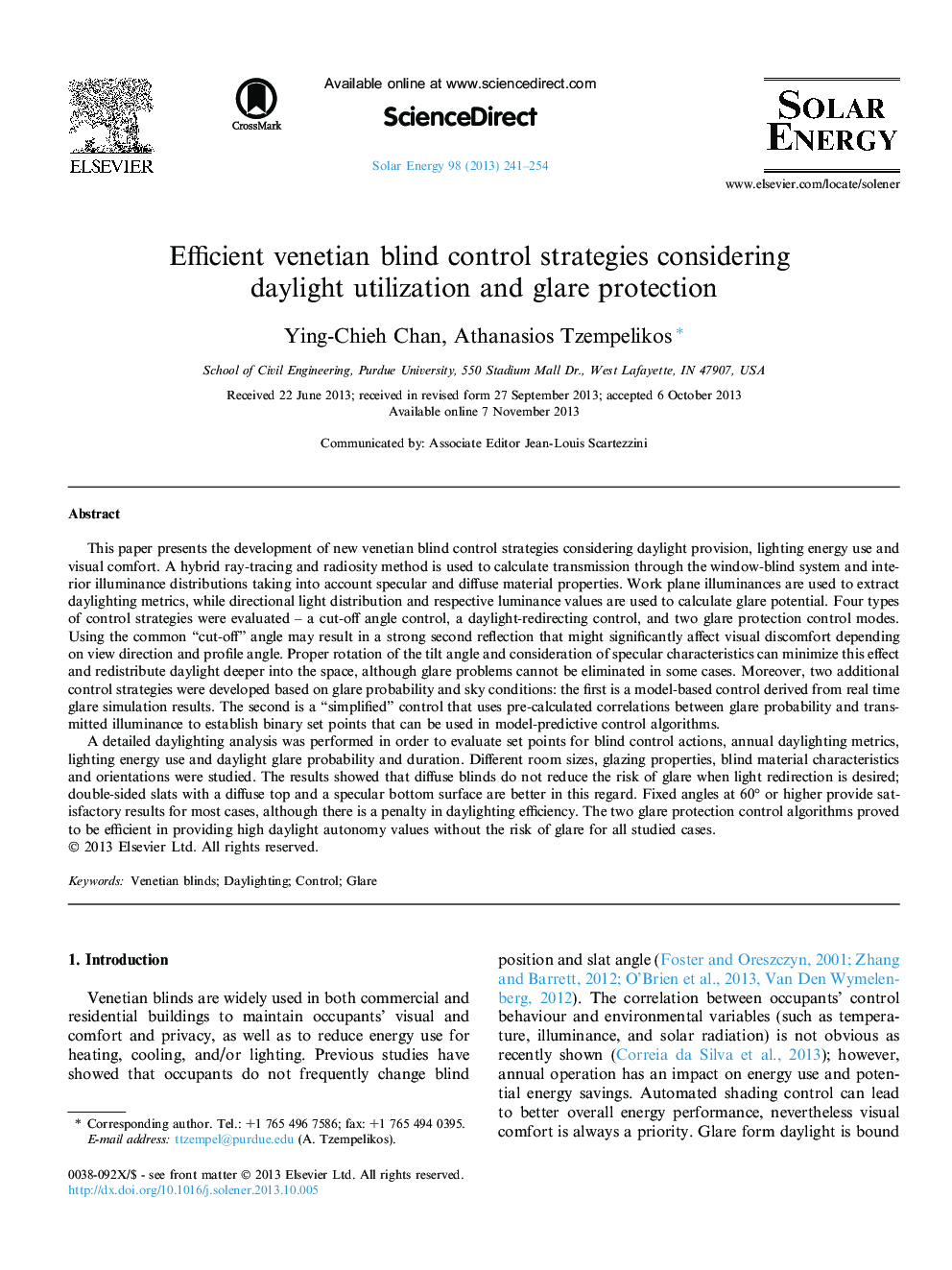| کد مقاله | کد نشریه | سال انتشار | مقاله انگلیسی | نسخه تمام متن |
|---|---|---|---|---|
| 1550286 | 998090 | 2013 | 14 صفحه PDF | دانلود رایگان |

• Venetian blind control algorithms for daylight use and glare control are presented.
• Blind diffuse and specular characteristics were considered.
• Light redirection and glare protection strategies were compared.
• Diffuse slats cannot solve glare problems using conventional controls.
• Annual daylighting metrics and temporal DGP plots are presented.
This paper presents the development of new venetian blind control strategies considering daylight provision, lighting energy use and visual comfort. A hybrid ray-tracing and radiosity method is used to calculate transmission through the window-blind system and interior illuminance distributions taking into account specular and diffuse material properties. Work plane illuminances are used to extract daylighting metrics, while directional light distribution and respective luminance values are used to calculate glare potential. Four types of control strategies were evaluated – a cut-off angle control, a daylight-redirecting control, and two glare protection control modes. Using the common “cut-off” angle may result in a strong second reflection that might significantly affect visual discomfort depending on view direction and profile angle. Proper rotation of the tilt angle and consideration of specular characteristics can minimize this effect and redistribute daylight deeper into the space, although glare problems cannot be eliminated in some cases. Moreover, two additional control strategies were developed based on glare probability and sky conditions: the first is a model-based control derived from real time glare simulation results. The second is a “simplified” control that uses pre-calculated correlations between glare probability and transmitted illuminance to establish binary set points that can be used in model-predictive control algorithms.A detailed daylighting analysis was performed in order to evaluate set points for blind control actions, annual daylighting metrics, lighting energy use and daylight glare probability and duration. Different room sizes, glazing properties, blind material characteristics and orientations were studied. The results showed that diffuse blinds do not reduce the risk of glare when light redirection is desired; double-sided slats with a diffuse top and a specular bottom surface are better in this regard. Fixed angles at 60° or higher provide satisfactory results for most cases, although there is a penalty in daylighting efficiency. The two glare protection control algorithms proved to be efficient in providing high daylight autonomy values without the risk of glare for all studied cases.
Journal: Solar Energy - Volume 98, Part C, December 2013, Pages 241–254